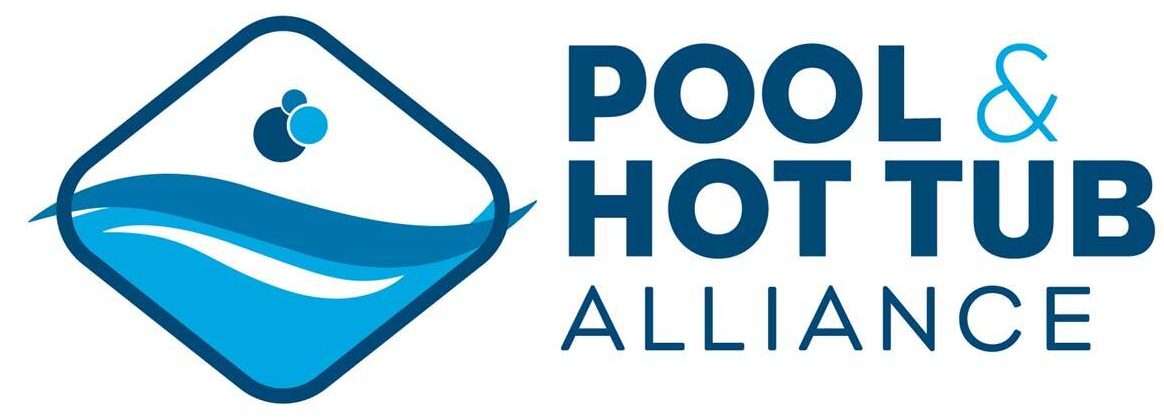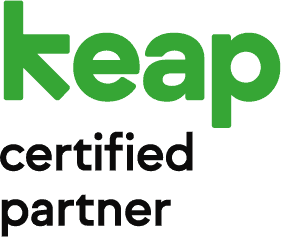
To truly understand SEO, you have to understand what it is and how it developed. SEO means “search engine optimization”. Search engines don’t produce content. Search engines find content and then match it with people searching for it. It’s a powerful tool that, if used well, can get you ranking higher on Google and other search engines and increase traffic to your business website.
How SEO Works for Search Engines
Search engines work based on two primary features:
Search crawlers and SEO
Crawlers scan websites, find content, and index it. Crawlers rate and index the content based on criteria such as keywords (what the content is about), quality (images, layout and design, navigation, and written quality, etc.), and the authority of the website.
Authority is based on numerous factors, including how long the website has been active, how active it is (this is why we recommend blogging at least weekly, for frequency of updates, as well as for keyword richness), the historical quality of the content, keywords related to the content, sites the content links to (you don’t want to be associated with spammy sites or competitor sites), sites that link to the content (these are called backlinks), and more. Some of this you can control, some of it you can’t.
Crawlers place emphasis on accessibility, as well. That’s why it’s so important to properly size images and use image tags, captions, etc., because websites rank content based on factors like accessibility for the visually impaired (their software can read the image text to them even if the user can’t see the image), mobile friendliness, quickness of the page to load, etc. Much of this is done on the tech side, but as a content producer you need to understand all of the elements that are evaluated, indexed, and ranked by search engine crawlers. While we typically focus on Google as the industry leader, it’s important to note that all search engines work basically the same way, including Bing, Yahoo!, DuckDuckGo, etc.
Don’t just picture your content on a full-screen desktop or laptop. Picture how it will look squished up on a smartphone or tablet screen, which is how roughly 60% to 80% of your readers actually view it. That means short paragraphs and breaking up large chunks of content with images, subheadings, captions, bullet points, etc.
Search algorithms and SEO
Once the crawlers know what sites are out there and what content is available, they need a way to connect it to people looking for it.
Search algorithms evaluate searches and find the best matches within the content available. This usually requires searching through thousands, perhaps millions, of indexed pages of content. The search takes place in milliseconds, meaning the content has already been crawled, evaluated, and ranked, long before Grandma Gertrude keys in, “how do i use the bookface” (a search, by the way, that delivers 14.5 million results in a mere .73 seconds.)
Search algorithms use a variety of factors to match searches with available content, including keywords (what’s the content about), intent (is the searcher looking for information or to buy a product? Perhaps they’re trying to find a local business that sells locally-sourced peaches or learn about rebuilding a ’57 Chevy?), and location. For example, if I’m looking for sushi joints with open-air seating in Birmingham, Alabama, I’ll get vastly different results than you will searching the same key term in Omaha, Nebraska or San Luis Obispo, California.
A Brief History of SEO
If you recall searches 10-15 years ago, they were very basic. Additionally, the content you came across was often very low quality. This is because the first search algorithms looked little beyond keywords and keyword frequency. Content creators often wrote almost useless content, but if it was infused with the right number of keyword instances, the crawlers thought it was a close enough match. These were the dark, spammy days of SEO.
In 2017, one of the most impactful algorithm updates in history, named Penguin, redefined search forever. This massive update was honed and refined in subsequent algorithm updates (and continues to be redesigned today), but the Penguin rollout marked the beginning of the new, smart era of search.
SEO: The Evolution
Google (and other search engines) knew their route to success was to do a better job of connecting searchers with high-quality, highly-relative, highly-useful content. They spent years and countless dollars developing better crawlers and algorithms to improve the consumer experience. They’ve done an incredible (almost scary) good job of doing this. Now, algorithms can judge the intent of my search, going far beyond the mere words I type in the browser window.
For example, if you’ve just searched “hot tubs,” “hot tub dealers near me,” and “how much does a hot tub cost,” your search engine is smart enough to match your next search for “hot spring” with an actual hot tub-based result, instead of showing you natural hot springs that make good day trips.
The Bottom Line of SEO: A better user experience
But the bottom line is that search engines are all about giving the best user experience possible. They want consumers to get exactly what they want on the very first try. Their success at this endeavor is apparent by how quickly we snatch up our devices and start typing when we want a recipe for guacamole, to learn how the Roman Empire fell, or how to set up night mode on our new iPad.
Putting It All Together for better SEO writing
So, to take the mystery out of SEO, we just need to learn to give the target audience what they want. Give it to them straight, give it to them quickly, and give it to them thoroughly. Provide the answer they’re looking for, and the finer points of SEO take care of themselves.
Pick smart keywords that relate specifically to what the user would search for to find what you’re offering.
If the title is about how much a HotSpring hot tub costs, by jove, lace it with keywords like “hotspring cost” “hot tub prices” and “the cost of a hot spring hot tub”.
The more specific the keyword, the better. General keywords like “hot tub” or “spa” get hundreds of thousands of searches per month, but most of those searches are not looking specifically for a HotSpring dealer in Detroit, Michigan. Additionally, those general keywords are so highly competitive that it’s really not worth trying to rank for those nationally when your dealer is local. It does our dealer in Phoenix, AZ no good to rank for “Freeflow spas” in Montpelier, VT. And most people searching aren’t looking for general hot tub info, they’re looking for specific info, in other words, where can I get a hot tub locally, does a local dealer carry the brand I want, how much will it cost, and when can I expect delivery.
SEO Questions You May Have
buT mY BLog iS 500 woRdS aNd i Can ansWeR thE QueStiOn iN onE senteNce
Excellent point. You immediately, accurately, and thoroughly answer the question in your blog. Then you go on to explain the whys behind the answer. Why do hot tubs range in price from $3,000 to over $20,000? Well, the quality of the materials, number and power of jets, features like automation, number of seats and loungers …. There are so many things you can discuss relative to the various price points of hot tubs! We are writers, so we are professional storytellers. Tell them a great story that answers their questions. This is the essence of excellent SEO.
Where do I put the keywords and keyphrases so that they sound natural and not keyword-stuffed?
Another important question! You weave it into the intro … “You’re looking for the best prices for hot tubs, so you need to know what defines hot tub price points”. The keywords don’t always have to be exact or exactly in order, because the newest search engine algorithms are super smart.
For instance, if you say, “blah blah blah HOT TUBS ….. blah blah blah PRICES” the algorithm gets the gist and puts the two together. It’s a good idea to shoot for having the keyword exact in a couple of places, most naturally, the intro and conclusion, and in some form or another sprinkled elsewhere in your content.
The same goes for location keywords, such as “hot tubs vail colorado” or “spas greater atlanta area”. Just write about hot tubs and mention Vail or Atlanta a few times, and search engines smash it together like Swiss cheese and roast beef on rye. It’s super easy to do this by weaving in mentions of the climate, topography, etc. For example, “hot tubs can even be installed on the hilly terrain of Birmingham …” or, “Hot Spring hot tubs are designed to withstand the brutal climate of Montana when a quality cover is consistently used …”
The Amazing SEO Superpowers of Subheadings
Often, I see good writers neglect to take advantage of those subheadings. Search engines look particularly closely at those, as it tells them what’s discussed in-depth and how important a certain keyword or keyphrase is in that content. Also, it’s the single easiest place to shove in those keywords without harming the natural flow of the content or sounding spammy.
Here’s how to use subheads to maximize the potential of the keyword “hot tub prices” while keeping a good flow to your piece and targeting the majority of your readers, which are inherently scanning your content, not expressly reading the entire piece. (Hence why we encourage creating easily-scannable content, rich with subheads, bullet point lists, bold and italic text, images, and other things that stop scanners and compel them to start actually reading.)
This is also an example of working in those location-based keywords seamlessly:
Hot Tub Price Points in Kalamazoo, Michigan
How Materials Affect Hot Tub Prices in Kalamazoo, Michigan
How Features Affect Hot Tub Prices in Kalamazoo, Michigan
How Delivery Affects Hot Tub Prices in Kalamazoo, Michigan
Who Offers the Best Hot Tub Prices in Kalamazoo, Michigan
You could create countless subheads this way, talking about design, quality, Made in the USA, etc.
Forget SEO and write something you’d want to read
Never, ever lose the story you’re telling in your keywords. When you get a new title, your mind should be trained to automatically start designing how you’re going to tell your story. What are your characters, settings, and what’s your drama and climax?
Your characters are your clients: those awesome fantastical folks selling the best hot tubs, pools, or outdoor kitchens this side of Jupiter.
Your characters are also your readers. Why did they come to you? What are they looking for? Every piece of content involves the reader’s pain point: why they came to you looking for an answer or a solution. Bad back? Hot tub. Reduce stress? Sauna. Need family time? Swimming pool. Sanitary pool or spa water? Chemicals. Cook great meals, easily, in the backyard? Grills. You get the picture.
Your setting is your client’s location. Is it snowy New Hampshire? Sunny Florida? Kentucky, which gets all the southern heat and a lot of the northern snow? What is it like owning a pool, spa, sauna, grill, patio furniture, or random widget in such a place? What’s the weather like when this content is being published? Are they preparing for swim season? Getting ready for a snowstorm? Buckling down for a round of ‘naders? What’s on their minds right now?
Your setting is often the client’s home or backyard. Where are they going to put these products? How will they be used? What problems will this product solve? What are the obstacles? Price? Room in the backyard? Cranky kids? Canceled vacation plans? A severely hot or cold climate? What pain points did they come to solve in this particular piece of content?
What’s your drama? Green hot tub water? Harsh chemical smell in the pool? Nowhere to sit when the fam comes over for the 4th of July? Short supplies of chlorine? How to keep spa water from freezing in Connecticut in January? How to stow away the patio chairs before a hurricane hits? How to know you’re getting the best quality for the lowest price in town?
What’s the Climax? Nailing the CTA
Your climax is your CTA—Call to Action. This tells them the natural next step in the process of their drama. You’ve answered Question A, the one they searched for, but what will Question B be? Is the next logical step reading an additional blog with related information? Maybe their next step is to browse the spa price points on the client’s site, or perhaps to visit their e-com store and order that one-of-a-kind-exactly-what-I-needed product you just discussed as the solution to their drama. But every good story has that climax. (Except Stephen King, but I digress…)
Have Any More Questions About SEO?
I hope this little tutorial helps you grasp that SEO isn’t just about keyword frequency. It’s about writing something useful and enjoyable to read that actually tells a story while answering their questions. If you do that successfully, the other elements fall right into place. Kind of like how I teach my granddaughter to work jigsaw puzzles. Get the edges (framework) into place, and it becomes clear where the rest of the pieces go.
The Get Smart Group may be the missing piece to your marketing strategy. If you need help with SEO for your business (and literally every other aspect of your marketing), our team of experts can help! Reach out for your free consultation today!









